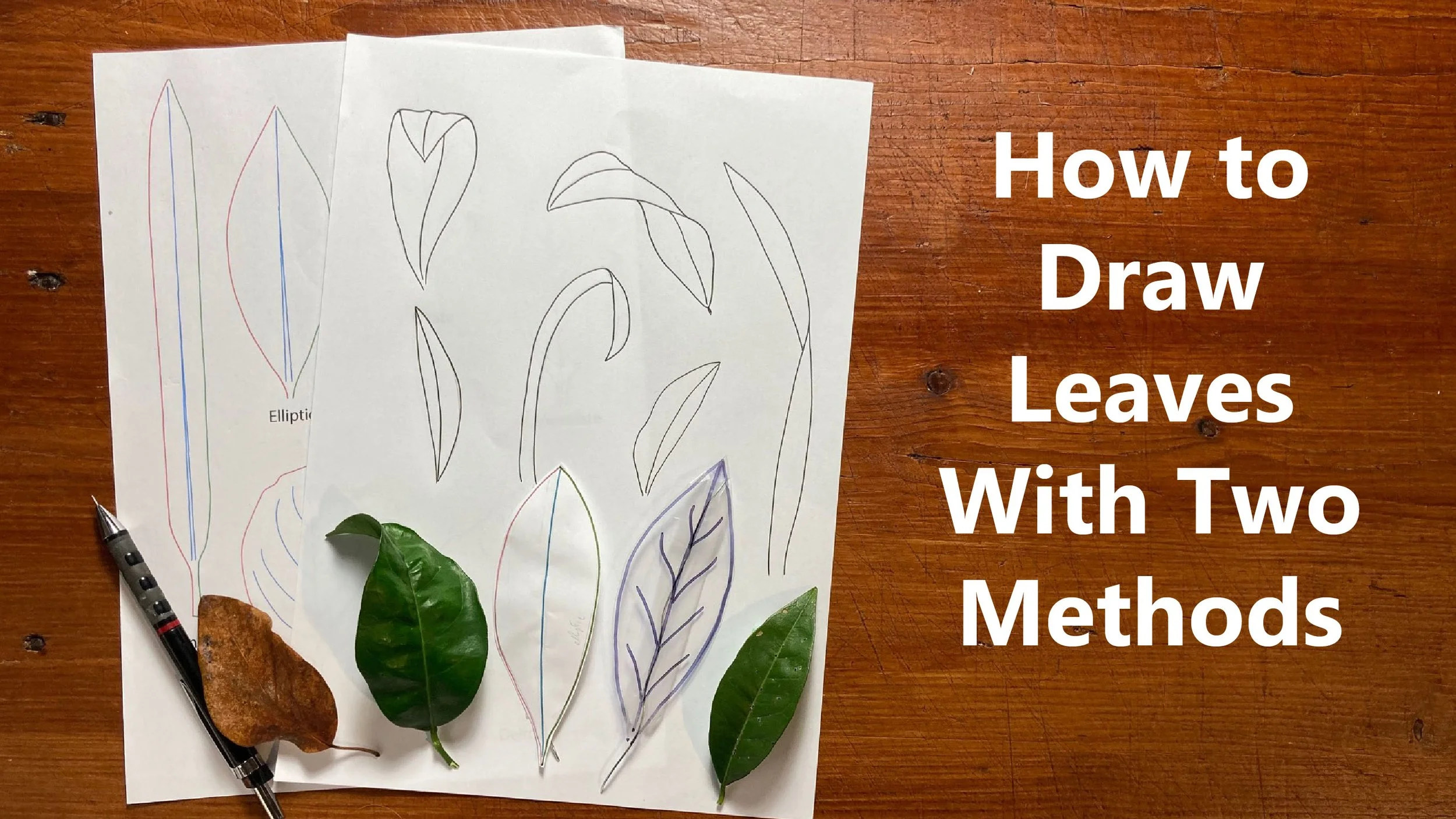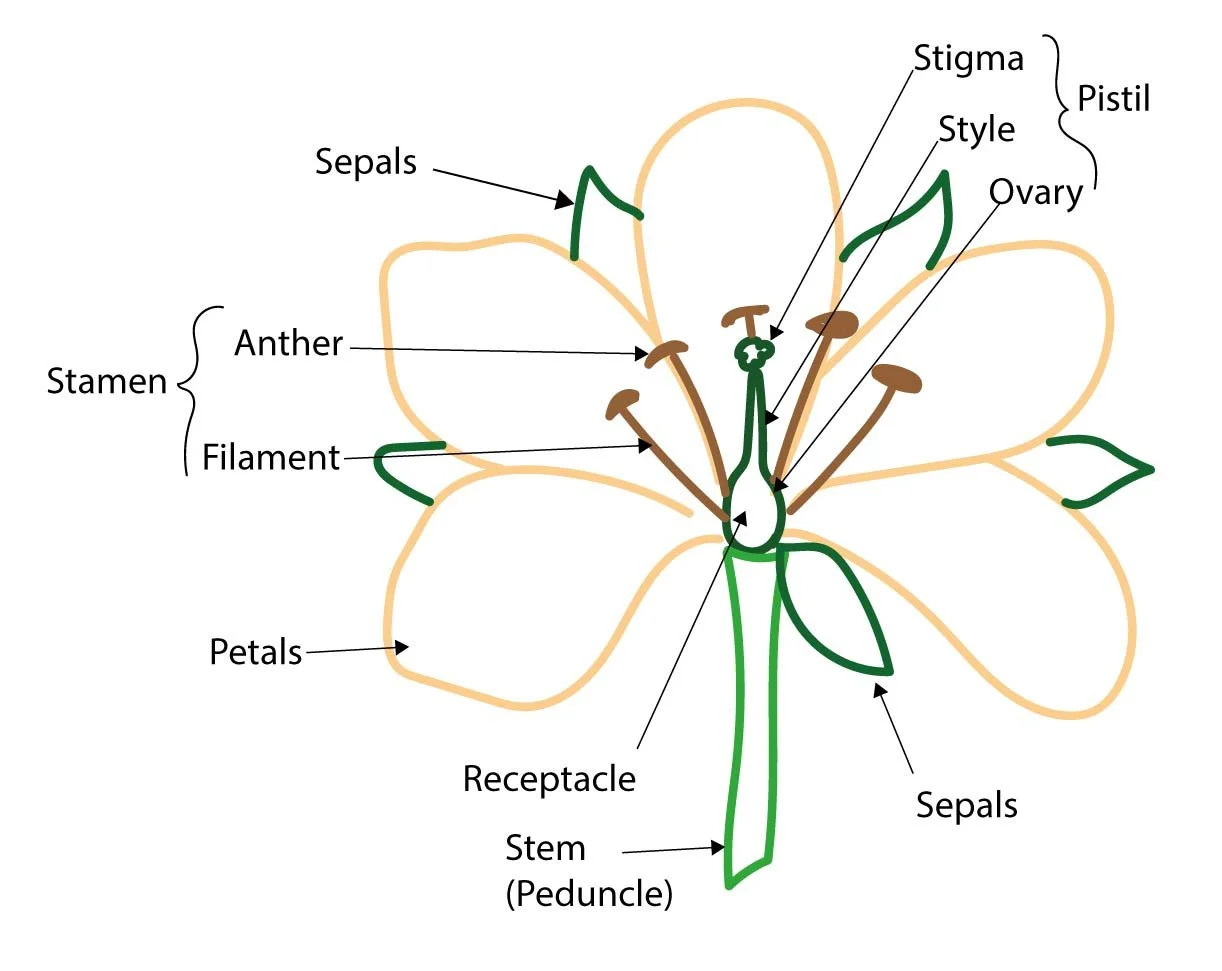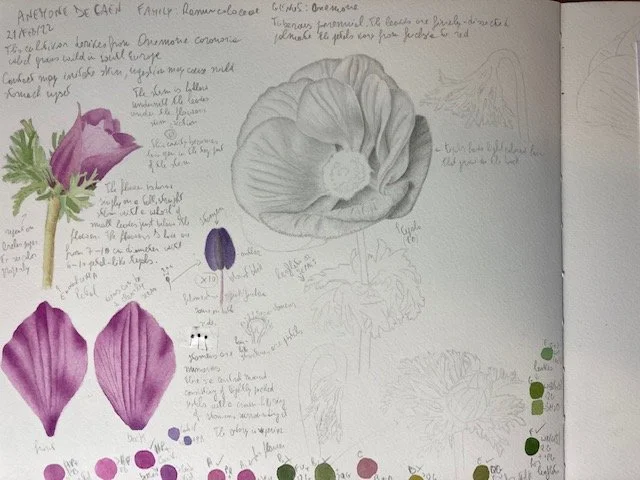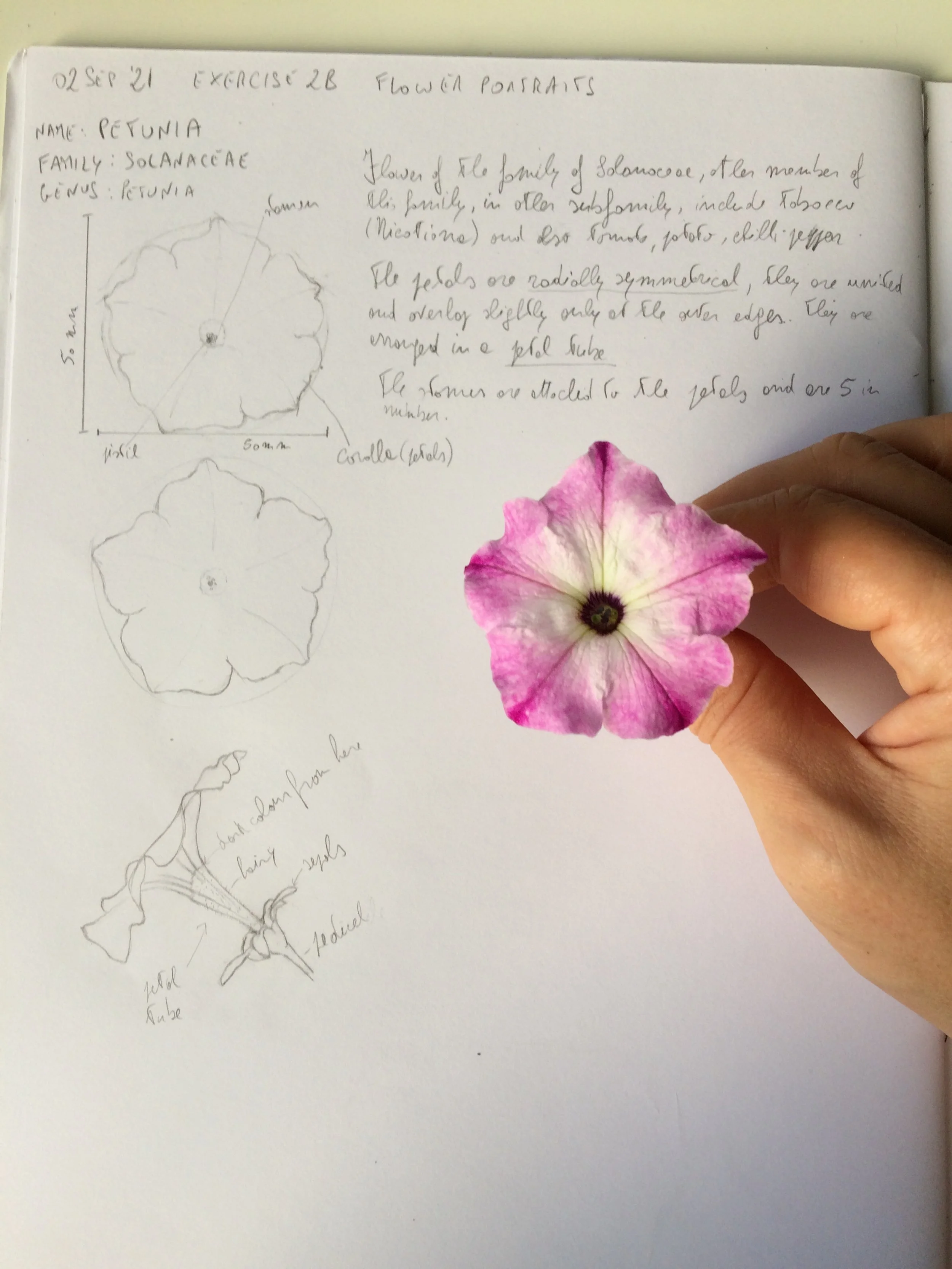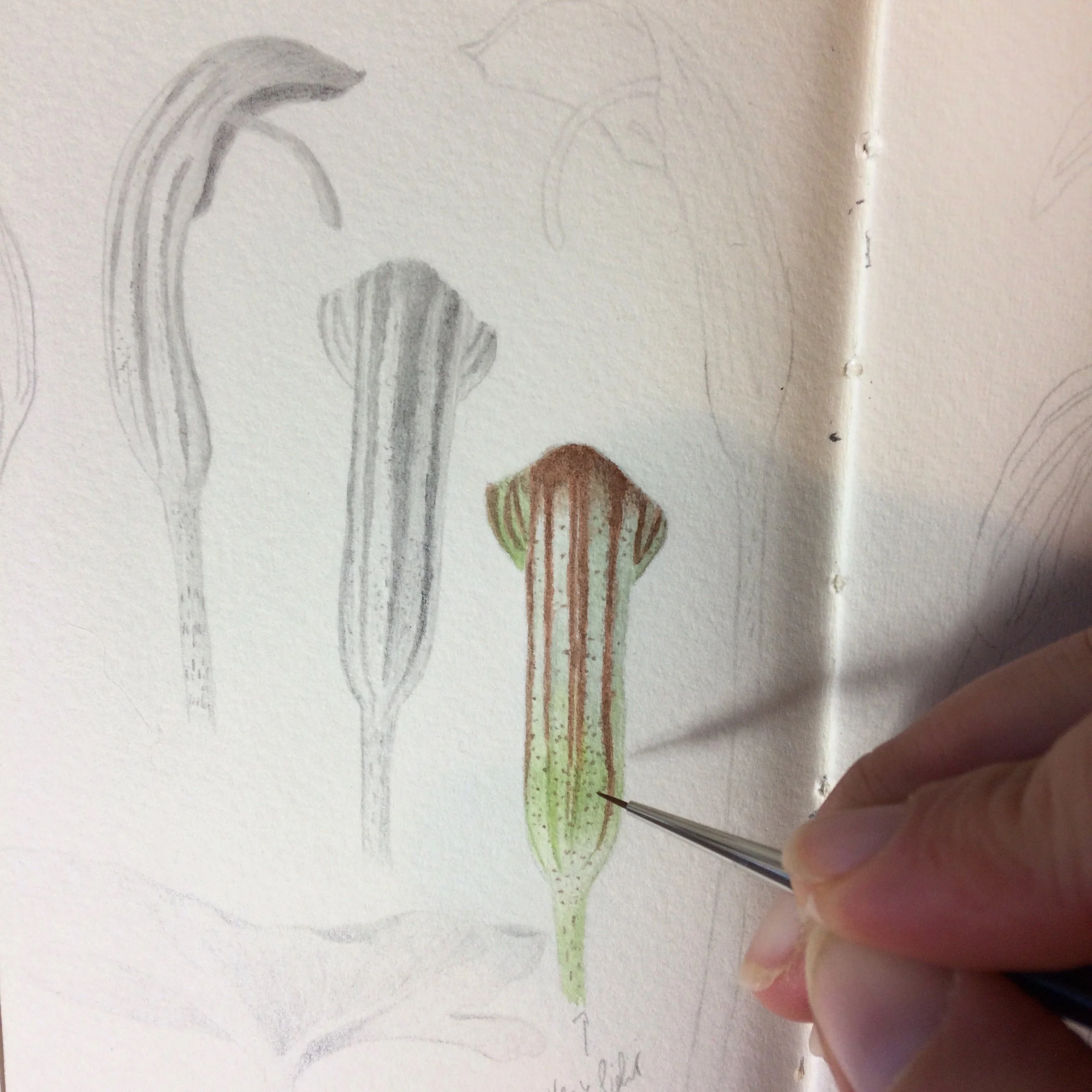Hi there my artist friends,
Are you ready to delve into the fascinating world of botanical anatomy? Understanding the basic structures of plants is key to accurately representing them in your watercolor paintings. So, let's grab our brushes and dive right in!
There are a few key elements that is important to understand:
1) Leaf Shapes: Leaves come in countless shapes and sizes, from simple ovals to intricate lobes. Take a moment to observe the plants around you and notice the variations in leaf structures. When painting leaves, remember to pay attention to their veins, serrations, and overall symmetry or asymmetry. These details will bring your botanical creations to life!
If you have trouble drawing leaves you should check out my class: “How To Draw Leaves With Two Methods”
2) Flower Structures: Flowers are nature's masterpiece, and capturing their intricate beauty requires some knowledge of their structures. Familiarize yourself with the different parts of a flower, such as petals, sepals, stamens, and pistils. Understanding these components will help you portray their unique forms and arrangement accurately.
3) Stem and Branches: While stems and branches may seem straightforward, they play a vital role in the overall composition of a botanical artwork. Note the thickness, texture, and direction of these elements, as they convey the character and growth patterns of the plant. Remember to vary your brushstrokes to mimic the smoothness or roughness of different stems.
4) Roots and Bulbs: Don't forget about what lies beneath the surface! Although roots and bulbs might not always be visible, they contribute to the plant's stability and nourishment. Incorporating these hidden details into your watercolor paintings can add depth and realism to your botanical creations.
Now that we've covered the basics, let's talk about a few tips to help you depict botanical anatomy accurately:
a) Observation is Key: To truly capture the essence of plants in your botanical watercolor paintings, observation is crucial. By spending time studying plants in various settings, you gain a deeper understanding of their unique characteristics, which you can then translate onto paper.
Start by immersing yourself in nature and closely observing plants in different environments. Take walks in gardens, parks, or even your backyard, and pay attention to the intricate details of leaves, flowers, stems, and roots. Notice the shapes, patterns, textures, and colors that make each plant distinct.
In addition to direct observation, consider taking reference photos of plants that catch your eye. These photos can serve as valuable references when you're back in your studio, allowing you to capture the essence of the plant even if it's not physically present. Make sure to take multiple angles and close-up shots to capture the finer details.
Creating quick sketches is another powerful technique for honing your observational skills. It doesn't need to be a highly detailed drawing; instead, focus on capturing the overall form and essential features of the plant. Sketching helps you develop a visual memory of plants, which becomes a valuable resource when working on your watercolor paintings.
One of my sketchbook pages for a study of Anemones
Through observation, you develop a keen eye for the intricate details that make plants unique. This knowledge allows you to capture their authentic beauty on paper, bringing your botanical watercolor paintings to life. Remember, the more you observe and study different plants, the better equipped you'll be to portray their specific characteristics accurately.
Viola tricolor are quite easy to draw and paint
b) Start with Simple Forms: When you're a beginner in botanical watercolor painting, it's essential to start with simpler plant species that have straightforward shapes. By beginning with uncomplicated forms, you can build a solid foundation and gain confidence in your painting skills. As you progress and gain more experience, you can gradually challenge yourself by tackling more complex subjects.
Starting with simple forms allows you to focus on understanding the basic structures and proportions of plants. By choosing plants with straightforward shapes, such as basic leaf forms or uncomplicated flower structures, you can grasp the fundamental elements of botanical representation without feeling overwhelmed. This approach helps you develop a strong understanding of shapes, color mixing, and brushwork techniques.
As you become comfortable with the basic forms, you can gradually expand your repertoire and venture into more complex subjects. This progression allows you to gradually introduce more intricate details, explore diverse plant species, and experiment with various textures and compositions. It's a natural evolution that lets you challenge yourself while building upon the skills you've already developed.
Remember, the key is to enjoy the process and embrace the learning curve. Starting with simple forms and gradually working your way up to more complex subjects ensures a gradual and steady improvement in your botanical watercolor painting abilities. It allows you to develop a strong foundation while maintaining a sense of accomplishment and motivation along the way.
So, don't be afraid to start small and gradually explore the vast world of botanical subjects. With patience, practice, and perseverance, you'll be amazed at how far you can progress and how beautifully you can capture even the most intricate plant forms in your watercolor paintings.
Sketches of a petunia flower (study page)
c) Practice Sketching: When it comes to familiarizing yourself with botanical structures, practice sketching is an invaluable tool. Sketching allows you to study plants more closely, understand their forms, and develop a deeper connection with their unique characteristics. Here's a breakdown of this concept:
Study page, color study for my Arisarum vulgare painting
Sketching as a Learning Tool: Sketching provides an opportunity to observe plants with a keen eye and translate their features onto paper. It trains your observational skills, enabling you to notice the intricate details, proportions, and shapes of different botanical elements.
Medium and Approach: You can use a pencil or light watercolor washes for your botanical sketches. The choice of medium depends on your preference and comfort level. Pencil sketches allow for precise lines and shading, while light watercolor washes provide a sense of color and transparency.
Embrace Loose and Gestural Techniques: Instead of striving for perfection, embrace loose and gestural techniques in your sketches. Focus on capturing the essence and overall impression of the plant rather than getting caught up in every minute detail. This approach encourages a more expressive and spontaneous style.
Gesture and Proportions: Start with quick, gestural lines to establish the basic structure and proportions of the plant. Pay attention to the overall shape, angles, and curves. These initial lines will serve as a guide for the subsequent layers of detail.
Gradual Refinement: After establishing the basic framework, gradually refine your sketch by adding more details. Observe and depict the distinct characteristics of leaves, flowers, stems, and other elements that make each plant unique. However, remember that the aim is not hyperrealism but rather capturing the essence and character of the plant.
Iterative Process: Sketching is an iterative process, which means you can create multiple sketches of the same plant or experiment with different angles and compositions. Each sketch builds upon the previous one, helping you refine your understanding of the plant's structure and translating it into your watercolor paintings.
By practicing sketching, you develop a deeper understanding of botanical structures, improve your hand-eye coordination, and refine your artistic instincts. It's an opportunity to explore and experiment, allowing your creativity to flow while developing a personal style.
d) Use Reference Images: Don't hesitate to gather reference images from books, online resources, or your own photography. These references can serve as valuable guides, ensuring accuracy in your paintings.
Remember, learning botanical anatomy takes time and practice. Embrace the process, enjoy the journey, and don't be afraid to make mistakes along the way. Watercolor painting is as much about experimentation as it is about honing your skills.
It’s also good to get one or two books on botany, if you need inspiration, in my YouTube channel I have published a book review for the book Botany Illustrated, (by Janice Glimn-Lacy, Peter B. Kaufman).
So have you learned about botany yet? Do you enjoy it? Do you have a good book to recommend on the subject?
Let me know in the comments below.
Till next time
Happy painting!

